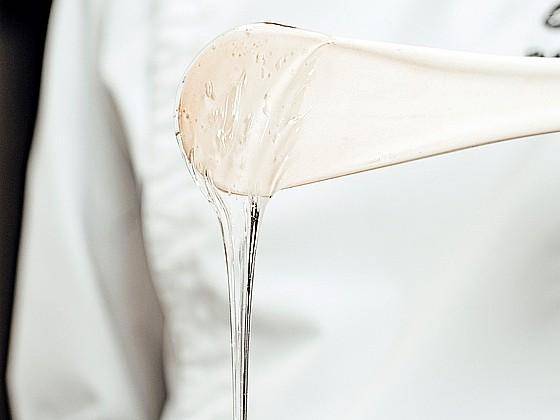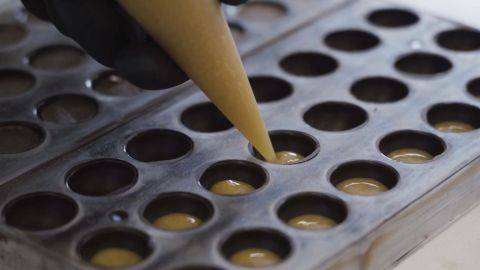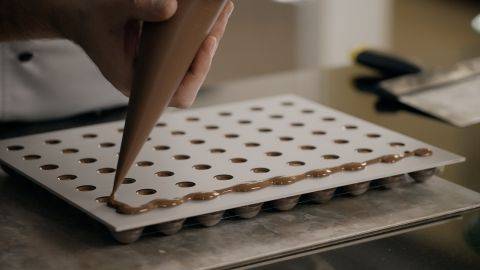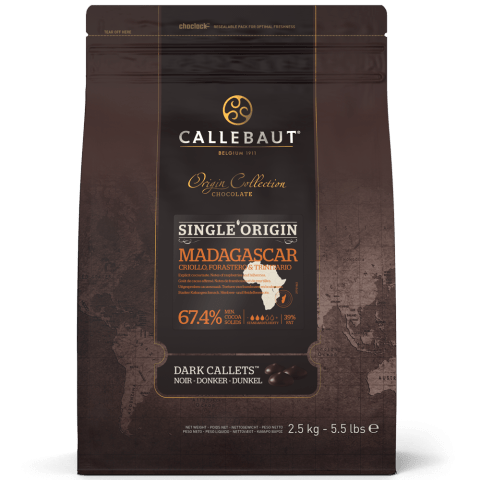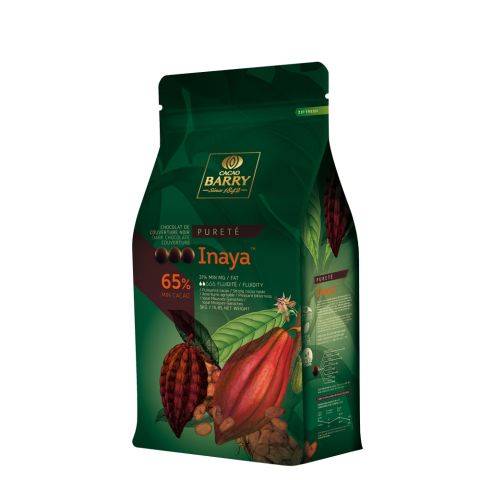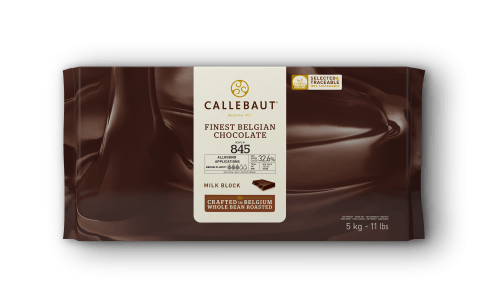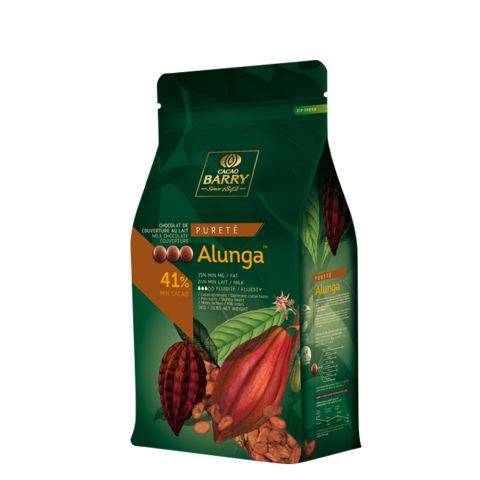Glucose Syrups & Powder (Key Sugars in Ganache)
Glucose Syrups & Powder (Key Sugars in Ganache)

Like dextrose, glucose syrups are formed through the hydrolysis of starch (corn, wheat, potatoes, etc.). In the case of glucose, the hydrolysis is partial, which means some complex starch molecules remain.
Glucose powder, also called atomized glucose, is merely glucose syrup with all of the water removed. While it is not impossible to adjust your recipe to allow you to substitute one for the other, this is complicated, and the results are uncertain.
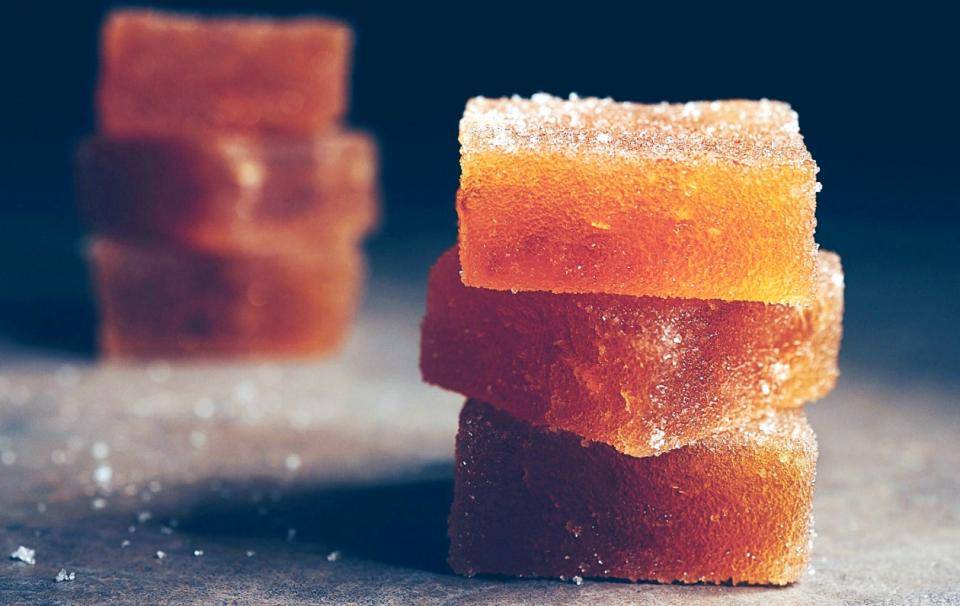
Glucose Syrups
Glucose syrups are used as sweeteners, texture-softening agents, anti-crystallizing agents, and binding agents. They are commonly used in confectionery, jams and canned fruits, ice cream and sorbets, dairy desserts, pastries, biscuits, beverages, breakfast cereals, and the like.
In confectionery, glucose syrups with a Dextrose Equivalent (DE) of 36 - 39 are most common. This range is considered on the low end of DE. We'll discuss Dextrose Equivalent in a future article.
The Advantages and Disadvantages of Using Glucose Syrups in Ganache
Advantages
- Anti-crystallization properties
- Benefits texture
- Low sweetness
- Dissolves easily in water
Disadvantages
- Adds water to the recipe
- Difficult to scale
- Cost
- Consumer perception
- Can be hard to find specific DE of syrups

Glucose Powder
Also known as dehydrated glucose syrup or atomized glucose syrup, glucose powder is commercially manufactured by dehydrating glucose syrups, effectively removing all the moisture from the syrup, resulting in only the solids. It is sold as a white powder that looks exactly the same as Dextrose. Don’t get them confused - they don't have the same properties!
The Advantages and Disadvantages of Using Glucose Powder in Ganache
Advantages
- No water added to the recipe
- Easier to scale and incorporate into recipes than glucose syrup
Disadvantages
- Cost
- Availability
- Determining the DE of the powder can be difficult in the artisan market

Cherry on Top! by Chef Russ Thayer
The dark chocolate ganache in Chef Russ's recipe uses both glucose syrup and dextrose powder. You can find a link to the recipe below.
Dextrose Powder vs Glucose Powder
Dextrose powder
- Always a DE of 100
- Dextrose powder is more prone to crystallization than glucose powder
- Dextrose powder is sweeter than glucose powder
Glucose Powder
- Glucose powders can be purchased in a range of DE depending on the syrup that was dehydrated
- Glucose powder helps inhibit crystallization better than dextrose powder thanks to the dextrin molecules (larger, more complex sugar/starch molecules) still present in the powder
Corn Syrup vs Glucose Syrup
For cottage businesses and artisans who don't have access to commercial suppliers, glucose syrup might be difficult to obtain. Corn syrup is cheap and easy to find, so can you use it instead of glucose syrup?
The answer depends on your goals.
While glucose syrups are available in different DEs, corn syrup is not, and it can range from 38-50 DE. Additionally, it contains a higher percentage of water, so a one-to-one substitution in a recipe calling for glucose syrup may not yield the expected results. Corn syrup is probably not a good substitute if you aim for consistency in your ganaches and a predictable shelf life for your end products. However, if these issues aren't high on your list right now, you might find that corn syrup is a suitable substitute.

